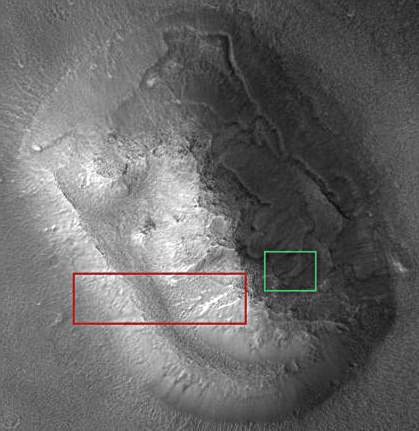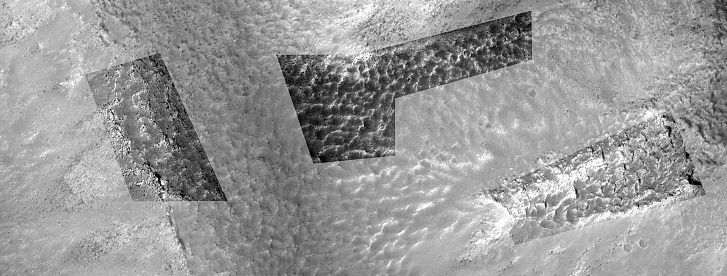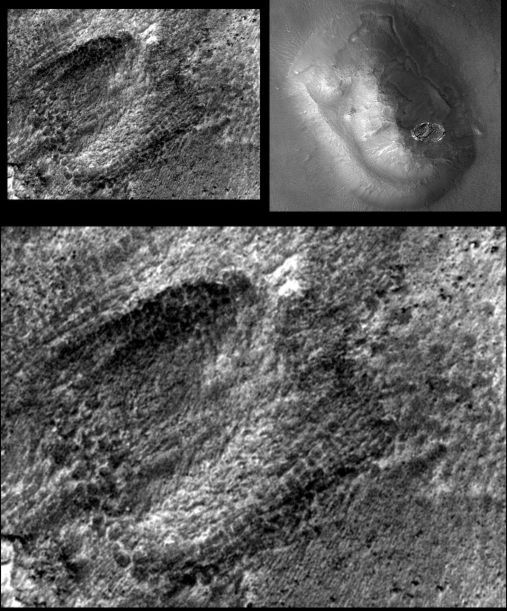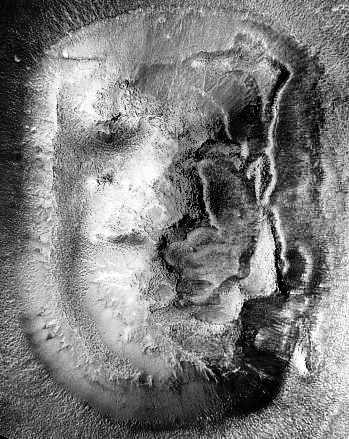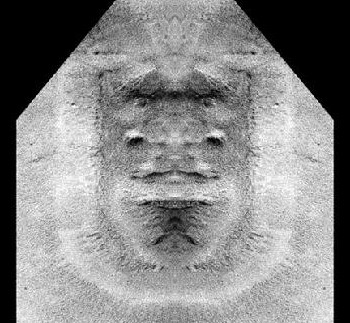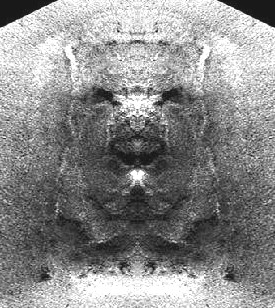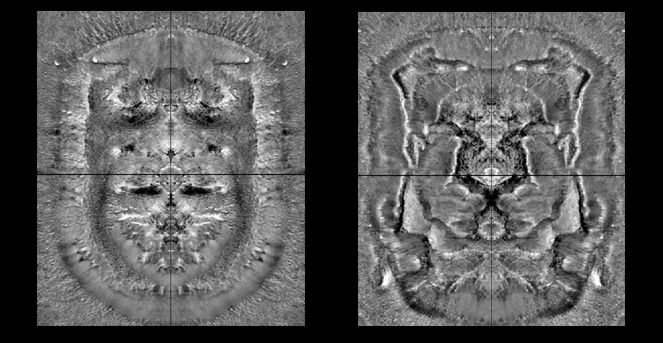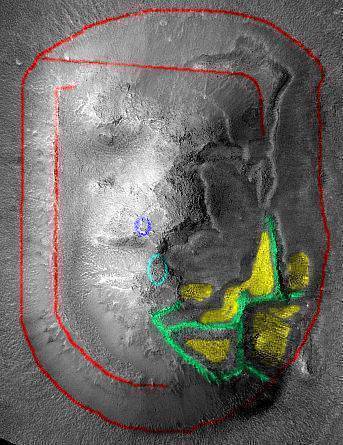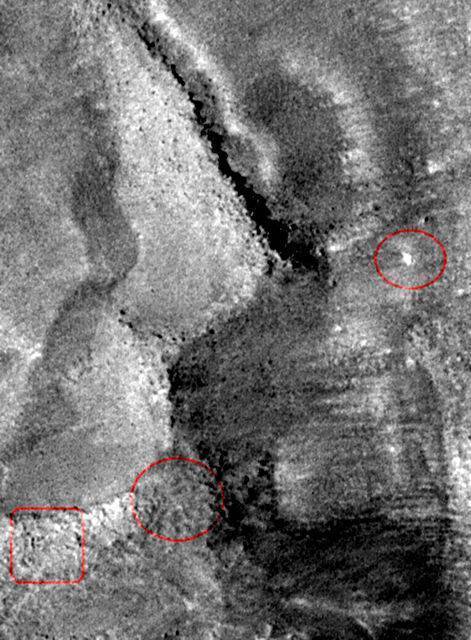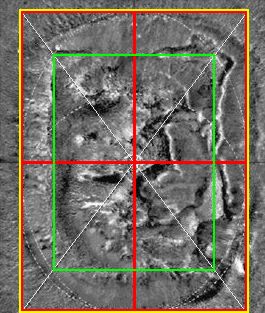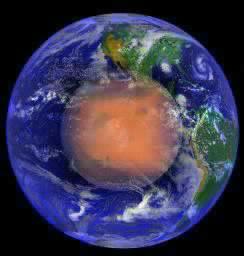 Cydonia Quest C The Face of 2007 C The First MRO Image of the Face On the 11th April 2007 the Mars Reconnaissance Observer (MRO) team published the first high resolution image of "a popular landform in Cydonia" on their website, (see µµµ). According to comments from the MRO team the "Face" image is one of the poorest quality images taken by the MRO to date. Although the image is not up to the usual crystal clear quality of almost all MRO pictures, the resolution of 11 inches to each screen pixel is still more revealing than the 2001 images taken by the Mars Global Surveyor (MGS) spacecraft. The full resolution MRO Face image comes in at a massive 300 megabytes and in a special format called JPEG 2000. These are far beyond the capability of my existing computer. Fortunately Paul McCarthy has kindly supplied me with a compressed version of the image, which has allowed me to pick out the most salient features. As Cydonia Quest has a limited amount of web space I've decided to limit the following analysis to two small example areas indicated on the context image below. |
| c cccccccccccccccccccccccc c The following illustration is a reduced hyperlinked thumbnail of the area outlined in red above. Three areas have been auto-equalised to clarify surface details visible in the more cloudy original MRO image. The enhanced area on the left shows rubble and dust filled cells on the flat surface of the Face platform. The appearance of these cells shows a strong tendency towards the rectangular. The effect is very similar in appearance to debris and sand choked city ruins in the deserts on Earth. In terms of arcology theory (see µµµ) these cells could be the remains of formerly roofed in habitable areas. The middle enhanced example shows a similar, but less choked, honeycombed area inside the "mouth" of the Face. The worn down walls in this honeycomb also show some tendency to the rectangular in some places. However, as this area is more contoured they also follow the 3D shape of the Face. Vast areas of the Face are honeycombed in this way. The right hand enhanced area is the highest part on the lower "lip" of the Face. It is different in character than the previous two honeycombed examples. Although it is being eroded down into in a slightly rectilinear way, it does not seem to have a truly honeycomb structure and is more solid. If a solid concrete structure on Earth - such as a dam - was eroded by the wind for millennia it might have this kind of appearance. |
| c Click on the following thumbnail image to see the fully sized enhancements.
C The second example area that has been chosen is in the "mouth" of the "Lion" side of the Face. The "Lion" side is in very deep shadow and the noise to signal ratio in what has been sent back by the MRO is very high. However, it is possible to bring out interesting (and artificial looking) features with enhancement methods. In the hyperlinked thumbnail below the reader should be able to make out a roughly square shaped depression, tilted with a corner pointing down. There is a definite honeycomb grid inside and around the sides of this depression. In the bottom side of this square depression the walls of this eroded grid are crossing roughly at right angles. If the Face is a construction (and not natural) then these grids seem to be its equivalent of "girders". There are a wide variety of surface textures in this image. Each texture signifies a different depth of erosion. The surface morphology of the Face is very complex and not simple like geology tends to be. c Click on the following thumbnail image to see the fully sized enhancements. c Summing up what we already knew about the Face. The Face has strong facial characteristics....... ccccccccccccccccccccccc .............even though it is a hybrid between something like a lion and something like an ape-man.
Its "floor plan" seems to be suspiciously neat, tidy and designed (red lines). Its south east quadrant is filled with super large walls (green) and depressions (yellow) that have the feel of ruined large scale architectural support structure. cccccccccccccccccccccccc cccccccccccccccc Mark Carlotto has discovered that the Face's platform and internal facial features fit well with the geometry of a pattern of nested 4 by 3 rectangles. ccccccccccccccccccccccccccccccccc NASA scientists tell us that the Face is just a simple Mesa. It is not simple. It is complex - with many features consistent with it being a heavily ruined construction. Given the implications of finding evidence of another (extraterrestrial) civilisation it - and many other anomalies at Cydonia - should be studied more seriously. As a designer of military software for finding hidden vehicles and installations in reconnaissance photos, Carlotto also has other reasons for suspecting the Face is artificial, (see µµµ). C µ The "Face" : Part One µ The "Face" : Part Two µ The "Face" : Part Three µ The "Face" : Part Four µ The "Face" : Part Five µ Return to the Enhancements page µ Return to the main Mars page
|
